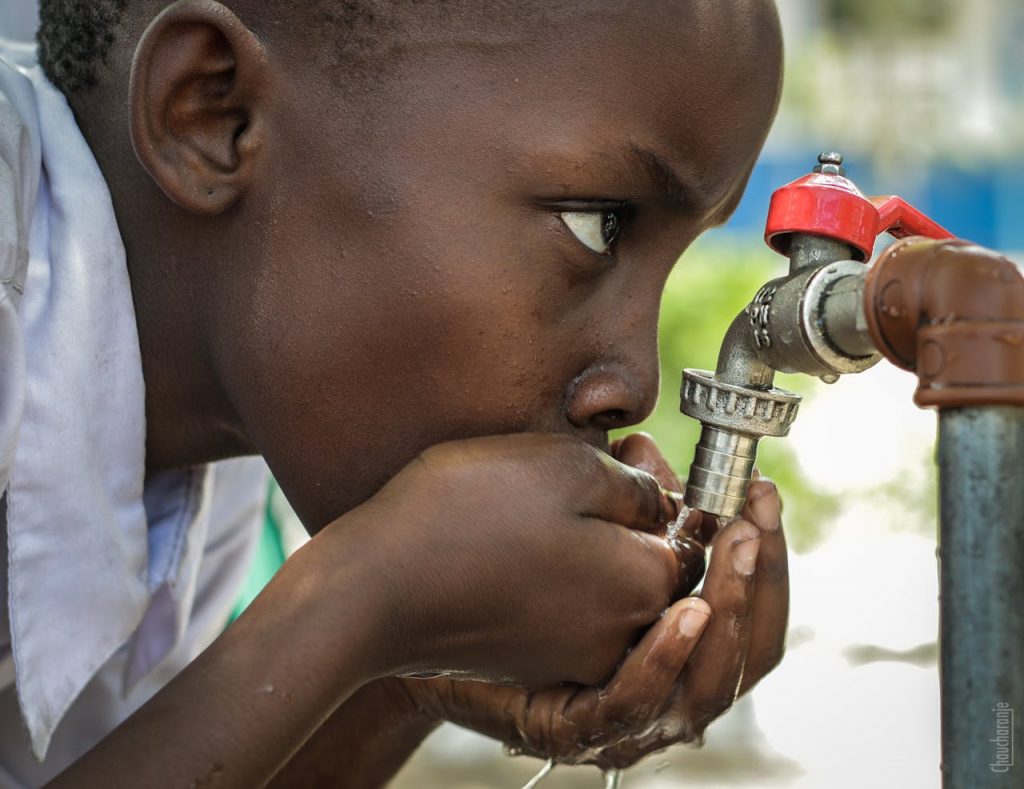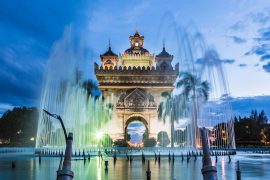Every year, on March 22, the global community unites to commemorate World Water Day. This significant event shines a spotlight on the indispensable role that water plays in our lives, while also shedding light on the obstacles that hinder its accessibility. It serves as a powerful platform to raise awareness about the vital importance of freshwater and advocate for sustainable water management practices.
In 2024, World Water Day takes on a profound theme: “Water for Peace.” This theme underscores the urgent need for global cooperation in tackling the complex water challenges that transcend borders. It emphasizes the critical role that sustainable trans-boundary water resources management plays in fostering peace, stability, and harmony among nations.
Water Transcends National Borders
Water, unlike oil or land, does not respect national borders. It flows through multiple countries, whether it is a small watershed draining into a water basin or a large river basin draining into a river, sea, or other bodies of water. Groundwater, flowing through aquifers, can stretch across vast geographical regions, including communities, villages, countries, and even continents. This reality necessitates strengthened international cooperation to ensure equitable and sustainable water resources management.
Therefore, this year’s World Water Day serves as a rallying cry for governments, organizations, and individuals to come together and address the challenges of water scarcity, pollution, and inadequate access. It highlights the need for inclusive and participatory approaches that empower communities to actively manage their water resources, fostering a sense of ownership and responsibility.
Empowering Communities: Inspiring Water Management Success Stories
Cooperation in water management is not limited to international agreements. At the local level, communities are coming together to effectively manage their water resources.
Organizations such as the Global Water Partnership (GWP)¹ play a crucial role in assisting these communities. With a network of 3000+ water organizations and partnerships that promotes the effective, efficient, and sustainable management of water resources around the world, GWP has become a formidable stakeholder in the fight to address water issues at a regional and local level. They provide practical advice and support to countries, helping them improve their water governance and management practices. By acting as facilitators and knowledge hubs, GWP brings various stakeholders together to implement sustainable and equitable water management practices worldwide.
WaterAid², another organization dedicated to water management, focuses on ensuring access to clean water, decent toilets, and good hygiene for everyone, everywhere. They work in various countries, prioritizing the most disadvantaged communities. WaterAid partners with local communities to design and implement Water, Sanitation, and Hygiene (WASH) solutions that are culturally appropriate, sustainable, and tailored to the specific needs of the community.
Similarly, UNICEF prioritizes the needs of children, recognizing that WASH interventions directly impact their health, education, and development. Their programs aim to create long-lasting solutions by empowering communities to manage and maintain water and sanitation facilities. UNICEF works with communities to raise awareness about the importance of WASH practices and promote behavior change related to hand-washing, sanitation, and menstrual hygiene management.
Oxfam, an organization addressing water scarcity, employs various approaches such as rainwater harvesting, well drilling, and rehabilitating existing water systems. They also integrate climate-resilient practices into their water programs, acknowledging the growing threat of climate change to water resources. Oxfam works closely with communities to identify their needs, design solutions, and foster a sense of ownership over water infrastructure. They assist communities in developing plans for the operation and maintenance of water systems, ensuring a steady supply of clean water.
The United Nations Development Programme (UNDP)³ champions similar goals on a broader scale, working with communities worldwide to improve access to clean water, sanitation, and hygiene. They also play a crucial role in promoting sustainable water resource management and protecting the delicate ecosystems that water depends on. By collaborating with local initiatives and international organizations like the UNDP, a wave of positive change can be created, ensuring a future with better water management for all.
Additionally, the African Union’s Agenda 2063 ⁴ prioritizes achieving water security and sanitation for all, aiming to ensure universal access to safe and affordable drinking water by 2030.
In various corners of the world, remarkable achievements in community-based water management have emerged. For instance, in Kenya, community-led water projects have empowered locals to safeguard water sources, establish irrigation systems, and ensure fair water distribution. One standout initiative is the Ithaka Mwanga Water Project ⁵ in Tharaka Nithi County, Kenya,⁶ which involved rehabilitating a spring and constructing a piped water system. The community actively participated in planning, construction, and ongoing management, fostering a sense of ownership and long-term sustainability.
Similarly, the Char Livelihoods Project⁷ in the southwest coastal region of Bangladesh⁸ engaged communities in constructing and maintaining embankments to protect their lands from flooding. This comprehensive endeavor also included livelihood development activities such as shrimp cultivation and vegetable gardening. By empowering communities and encouraging their active involvement, this project has not only addressed water scarcity but also fostered social cohesion and resilience.
In Australia,⁹ the Murray-Darling Basin Authority (MDBA),¹⁰ a prominent Catchment Management Authority (CMA), has demonstrated a strong commitment to community engagement. Through various initiatives, the MDBA educates and empowers communities on water-related issues, actively encouraging their participation in decision-making processes. Recognizing the unique connection of Indigenous Australians to water, the MDBA ensures their involvement in water management discussions, honoring their invaluable perspectives.
These inspiring projects not only tackle water scarcity but also cultivate a sense of unity, cooperation, and resilience within communities. By empowering individuals and fostering sustainable practices, these initiatives pave the way for a brighter water-managed future.
Technological Advancements: Sharing Knowledge and Innovation
Technological advancements also play a significant role in water cooperation. Real-time data-sharing platforms enable countries to monitor water levels in shared basins, facilitating informed water management decisions. Desalination plants, jointly funded and operated by neighboring countries facing water shortages, exemplify technological cooperation leading to shared solutions. In recent years, advancements in desalination processes have significantly reduced the cost of producing clean water from seawater, making it a more viable option for regions experiencing drought.
Innovative technologies are also emerging to address water treatment and purification challenges. PipePredict,¹¹ for instance, offers a digital solution for water utilities to detect leaks and predict pipe bursts in their networks. By creating a digital replica of the physical pipe network using Geographic Information Systems (GIS) data and existing sensor information, PipePredict can detect leaks much earlier than traditional methods, minimizing water loss and potential damage.
Oxyle’s Nanocatalyst¹² Treatment Reactor tackles the presence of toxic micropollutants in water treatment. By utilizing a patented nanocatalyst, Oxyle accelerates chemical reactions to break down micropollutants through advanced oxidation. This technology can be integrated into municipal wastewater treatment plants to address micropollutants that conventional processes may not eliminate. The effectiveness of the nanocatalyst may vary depending on the specific types of micropollutants present in the wastewater, and further research is needed to fully understand its long-term viability and impact.
Warranium¹³ addresses wastewater treatment challenges with its innovative Membrane Bioreactor (MBR) technology. MBRs combine biological treatment with membrane filtration, producing high-quality effluent that can be reused for various applications, reducing reliance on freshwater sources.
Nanoseen’s Filtration Nanomembranes¹⁴ offer a solution for water purification and desalination. These nanomembranes, containing microscopic pores, trap impurities, and salts while allowing clean water to pass through. By combining different nanomaterials, Nanoseen’s nanomembranes achieve specific properties for various purification needs. Notably, Nanoseen claims to achieve desalination without requiring external energy sources like pressure or electricity, making their technology suitable for remote areas lacking reliable power grids.
Conclusion- A Ripple Effect for a Sustainable Future
Cooperation in water management creates a ripple effect of positive change. By working together, nations and communities can ensure equitable access to water, promote economic development, and build resilience to climate change. However, it is crucial to recognize the crucial role that women play in water management. Women are often the primary users and managers of water in households, making them effective water managers. Their involvement and representation in decision-making processes are essential for sustainable water policies at all levels.
Organizations such as the Centre for Economic and Leadership Development (CELD)¹⁵ empower women to become advocates of sustainable community development and agents of change. By providing leadership development opportunities, training, and networking, CELD ensures that women’s voices in water management and other areas of community building are heard.
On this World Water Day, let us commit to cooperation and empower women. Together, we can turn water into a tool for addressing gender injustices, promoting peace, prosperity, and a sustainable future for all. Through collaboration at local, regional, and international levels, we can create a ripple effect of positive change, ensuring the equitable and sustainable management of our precious water resources.
References:
¹ https://www.gwp.org/
² https://www.wateraid.org/uk/
³ https://www.undp.org/home
⁴ https://au.int/en/agenda2063/overview
⁵ https://tharakanithi.go.ke/
⁶ https://tharakanithi.go.ke/
⁷ http://www.clp-bangladesh.org/index.html
⁸ http://www.clp-bangladesh.org/index.html
⁹ https://www.mdba.gov.au/
¹⁰ https://www.mdba.gov.au/
¹¹ https://www.pipepredict.com/
¹² https://wipogreen.wipo.int/wipogreen-database/articles/146638
¹³ https://warranium.com/
¹⁴ https://nanoseen.com/en/nanoseenx-en
¹⁵ https://celd.org.uk/





Comments are closed.